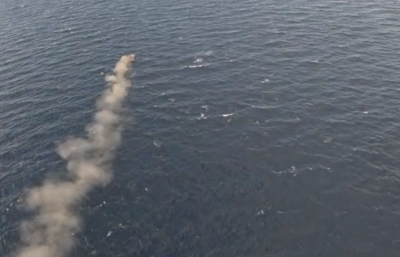Know, know, know your boat
From U.S. Coast
Guard reports
In a small harbor on Florida’s Gulf Coast, the owner of a 67-foot wooden-hulled shrimp trawler had decided to sell the boat. He hired a local fishing vessel skipper and crewman to take the trawler 100 miles north, to a shipyard that would prepare the boat for sale.
Around mid-morning on the February day the vessel was departing, the owner and his mechanic met with the veteran skipper and crewman. The mechanic told the skipper he had run the engines and generator, checked the fuel/oil levels and checked the packing gland. He assured the skipper he hadn’t noted any major problems.
The skipper and crewman checked the engine room, navigation equipment and life raft and visually verified there were flares onboard.
At approximately 12:30 p.m., they began the trip to the shipyard. About four hours later, generator problems began, which the crewman temporarily fixed.
At approximately 7 p.m., the skipper and crewman heard a loud “bang” that seemed to emanate from the engine room. Both men thought the trawler might have hit an object; however, they didn’t see any obstructions in the water.
Minutes later the generator failed, and the vessel lost all electrical service. The bank of batteries, designed to provide back-up power for the radios and navigational equipment, also failed to work.
The skipper went to the engine room to check the generator and saw water in the bilge rising over the deck plates. He couldn’t determine the water’s source.
When the water level rose above the main engine, the skipper decided they should prepare to abandon ship.
He and the crewman donned lifejackets, and the skipper located five flares. The crewman deployed the inflatable life raft and retrieved the EPIRB. The two men then spotted a tugboat coming from south of their position. The skipper tried to set off two flares; neither ignited.
With the trawler powerless, the skipand crewman started a fire on the after rail to signal the approaching tug. After the vessel caught fire, the two men entered the life raft. The skipper activated the EPIRB and managed to light one of the remaining flares. The tug saw the blaze and altered course, arriving 15 minutes later to pick up the men.
The Coast Guard, having received the EPIRB signal, deployed a rescue vessel from a nearby boat station that would transport skipper and crewman to the nearest Coast Guard base.
By 10 p.m., the trawler was fully aflame. The Coast Guard also coordinated with local authorities, and by 10:30 p.m., fireboats from three municipalities were on the scene. After several hours, firefighters extinguished the blaze, but the trawler sank at about 2:20 a.m.
Lessons learned
Information gathered from the owner, mechanic and skipper suggested the trawler may have been susceptible to a catastrophic hull and/or equipment failure. Additionally, the skipper and crewman’s quick walk-around of the vessel wasn’t enough to prepare them for what was to transpire.
Be aware of and pay attention to the material condition of the vessel you are on. Ensure that all lifesaving and safety gear is in serviceable condition and up to date. Always err on the side of caution to ensure that you’ll fish safe.
This article is based on U.S. Coast Guard reporting and is intended to bring safety issues to the attention of our readers. It is not intended to judge or reach conclusions regarding the ability or capacity of any person, living or dead, or any boat or piece of equipment.








